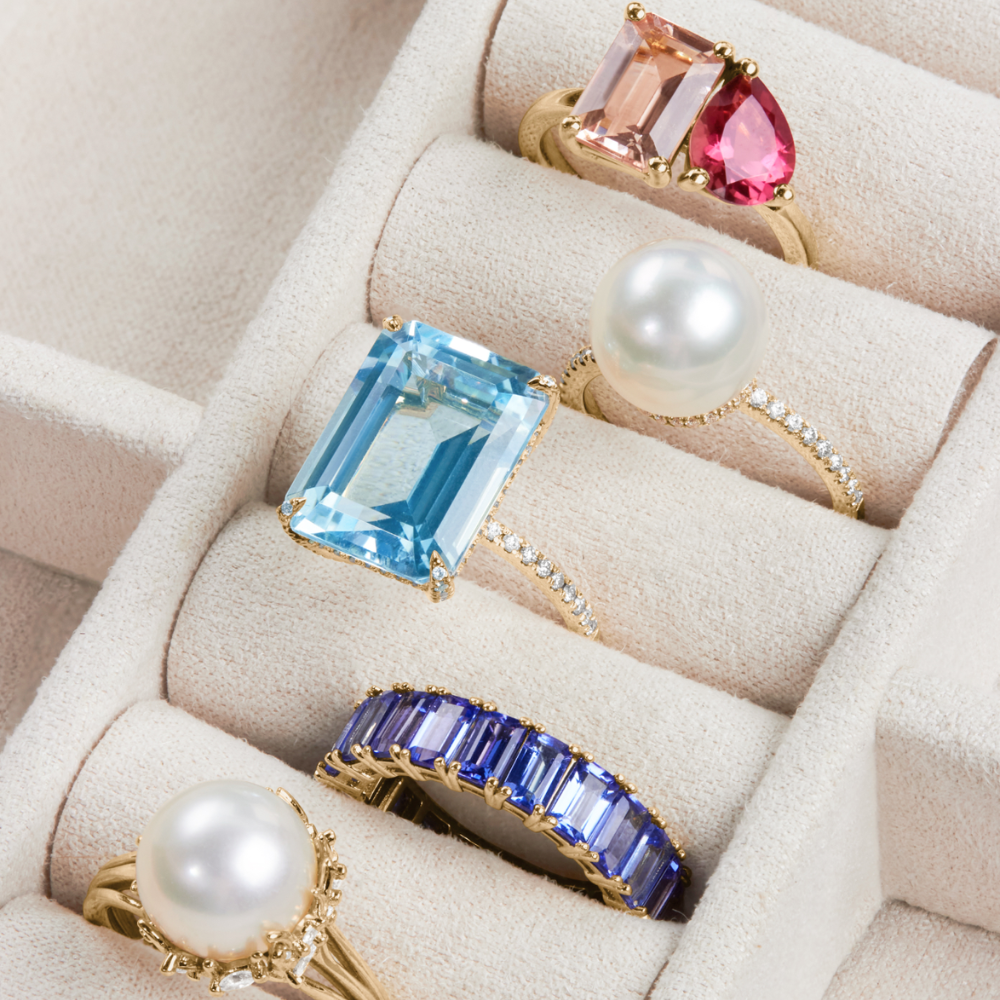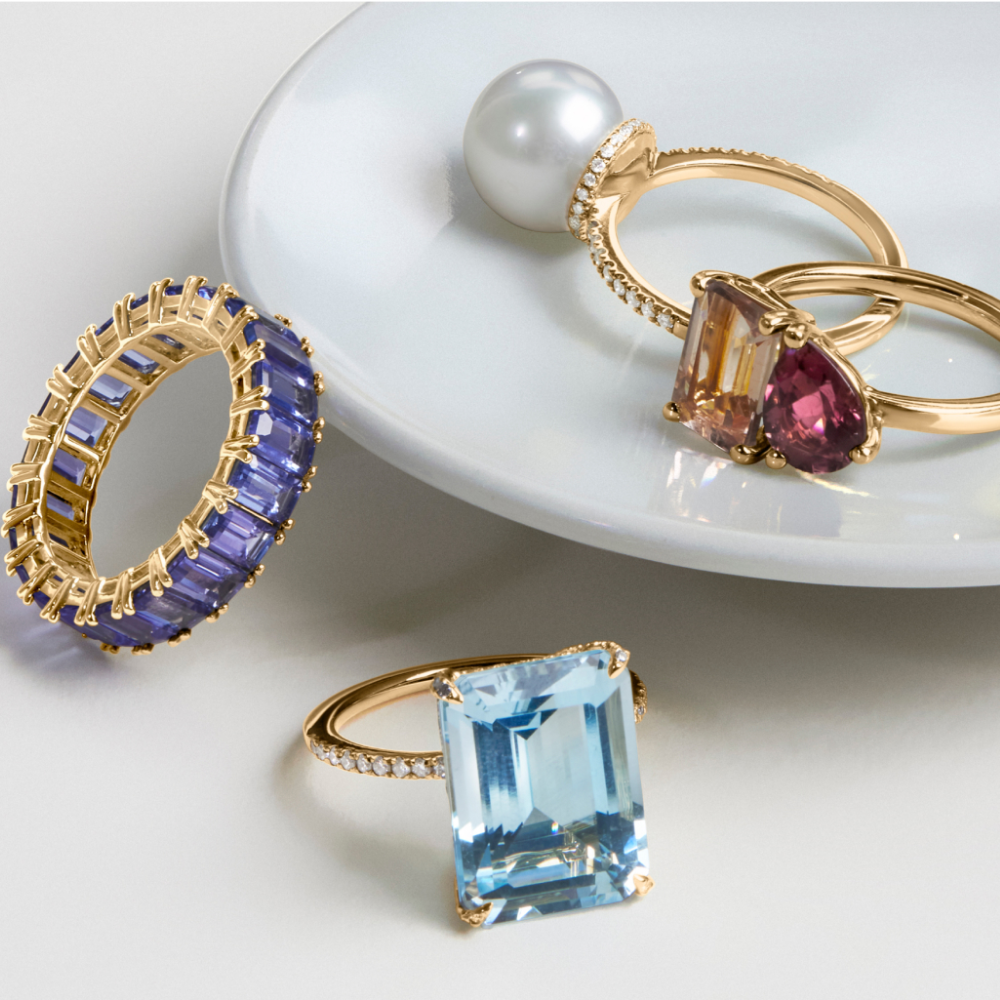Birthstones are gemstones associated with each month of the year. While many people enjoy wearing their birthstone in jewelry, others simply appreciate knowing which gems correspond to their birth month. Here’s a quick guide to help you find your birthstone and learn more about these special gems.
Find Your Birthstone
Here’s a simple list of birthstones by month:
- January – Garnet: Available in multiple colors beyond the classic deep red, garnets are durable stones that work well in everyday jewelry.
- February – Amethyst: The amethyst variety of quartz ranges from light lavender to deep purple and is both affordable and widely available.
- March – Aquamarine: Known for its light blue color similar to seawater, aquamarine typically appears in larger sizes due to its crystal structure.
- April – Diamond: The hardest natural gemstone, diamonds are ideal for daily wear and come in a range of colors beyond the traditional colorless variety.
- May – Emerald: Emerald gemstones come in rich, lustrous green tones, and have been coveted by royalty for centuries.
- June – Pearl, Alexandrite: Pearls are organic gems that form in shells, while alexandrite is a gemstone that changes color in different lights.
- July – Ruby: Part of the corundum family along with sapphires, rubies are extremely durable and range in color from pink-red to deep crimson.
- August – Peridot, Spinel, Sardonyx: Peridot is known for its lime-green color, while spinel comes in many colors including red and blue and sardonyx shows distinctive brown and white banding.
- September – Sapphire: Though best known in blue, sapphires naturally occur in every color except red.
- October – Opal, Tourmaline: Opals display flashes of various colors, while tourmaline comes in more color combinations than any other gemstone.
- November – Topaz, Citrine: Topaz comes in a variety of hues from rich honey amber to deep blue, making it one of the most versatile and striking gems in the world, while citrine offers a sunny yellow color.
- December – Turquoise, Tanzanite, Zircon, Blue Topaz: Turquoise has a distinctive blue-green color, tanzanite shows a rich blue-violet, and zircon comes in a variety of colors with notable sparkle. Meanwhile, natural blue topaz is rare, but treatments make it widely available.
You might notice that some months have more than one birthstone. These multiple options, both traditional and modern, offer flexibility to choose a stone that fits your style or budget.
Ways to Wear Your Birthstone
Birthstones can be incorporated into jewelry in many ways, from subtle accent stones in everyday pieces to custom designs that combine multiple family members’ birthstones. People often choose birthstone jewelry for:
- Meaningful gifts for birthdays or special occasions
- Family jewelry incorporating multiple birthstones
- Alternative engagement ring stones
- Commemorating important life events
Birthstone jewelry makes a meaningful addition to any collection because these pieces can become family keepsakes. Many birthstones are also durable enough for daily wear.
Your approach to birthstone jewelry can be guided by your personal preferences. You might choose a birthstone because you like its color, appreciate its durability, or find it affordable. Remember, while birthstones are traditionally associated with specific months, there’s no rule saying you can only wear your own. Many people choose birthstones simply because they like their appearance or because they match their style preferences. To learn more about birthstones, read our comprehensive guide or chart for quick facts.
Still interested in learning more about birthstones? Check out our other Birthstone Guides: Birthstone Chart, Birthstone Colors, Birthstone Meanings, Zodiac Birthstones, Most Expensive Birthstones, Rarest Birthstones, January Birthstone, February Birthstone, March Birthstone, April Birthstone, May Birthstone, June Birthstone, July Birthstone, August Birthstone, September Birthstone, October Birthstone, November Birthstone, December Birthstone, Alexandrite Guide, Aquamarine Guide, Emerald Guide, Garnet Guide, Pearl Guide, Sapphire Guide, Topaz Guide






